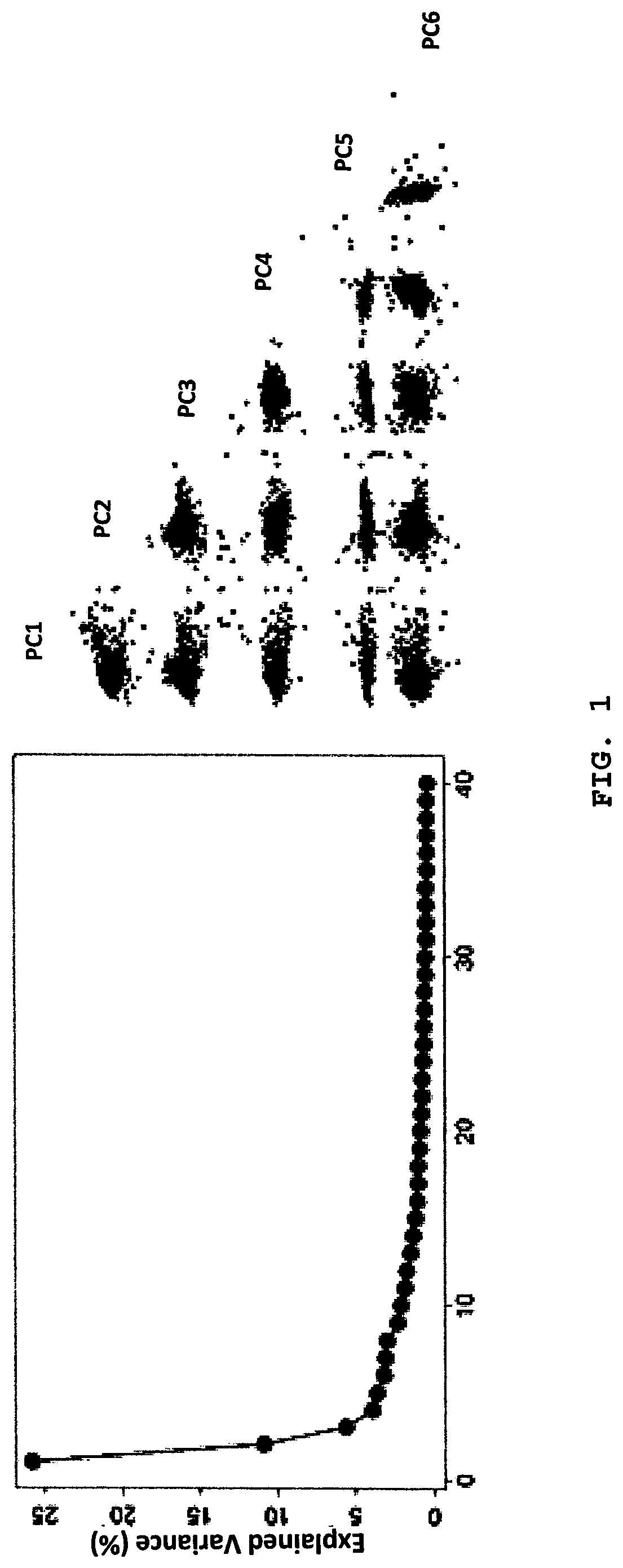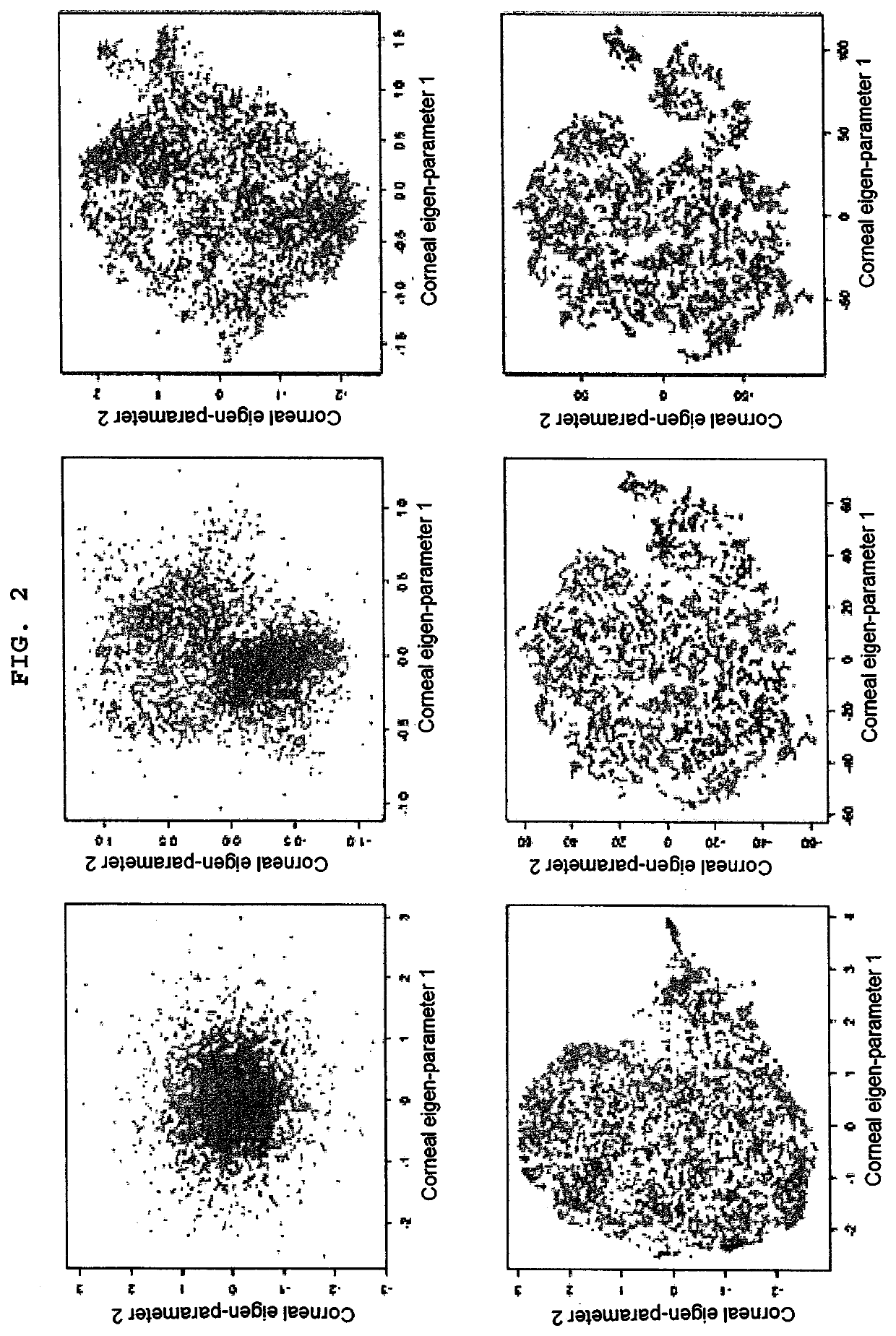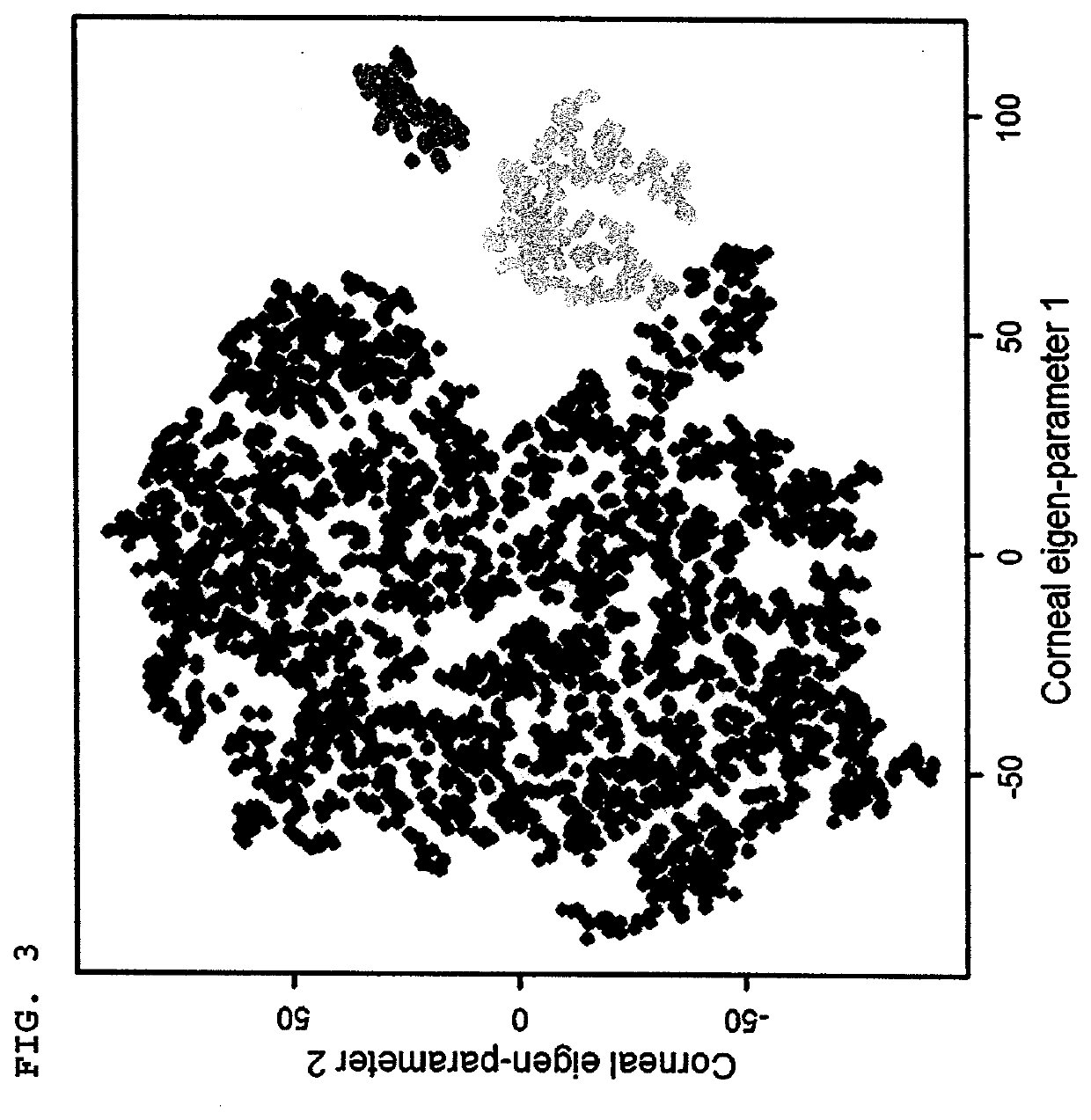Method for assisting corneal severity identification using unsupervised machine learning
- Summary
- Abstract
- Description
- Claims
- Application Information
AI Technical Summary
Benefits of technology
Problems solved by technology
Method used
Image
Examples
Embodiment Construction
[0151]In this multi-center retrospective study, we collected corneal optical coherence tomography (OCT) images from 12,242 eyes of 3162 subjects using SS-1000 CASIA OCT Imaging Systems (Tomey, Japan) and other parameters from the electronic health record (EHR) system. All data available at each instrument was collected without any pre-condition. We then selected a single visit from each eye and excluded eyes with missing Ectasia Status Index (ESI). A total of 3,156 eyes met the criterion. About 57% of the participants were female and the mean age was 69.7 (standard deviation; SD=16.2) years. Three screening labels were derived from the ESI index of Casia (produced by TOMEY Corporation); normal if ESI is between 0 and 4, forme fruste keratoconus (or keratoconus-suspect) if ESI is between 5 and 29, and keratoconus if ESI is 30 or greater. Using Casia labels, our dataset included 1970 healthy eyes, 796 eyes with forme fruste keratoconus, and 390 eyes with keratoconus. ESI is basically ...
PUM
 Login to View More
Login to View More Abstract
Description
Claims
Application Information
 Login to View More
Login to View More - R&D
- Intellectual Property
- Life Sciences
- Materials
- Tech Scout
- Unparalleled Data Quality
- Higher Quality Content
- 60% Fewer Hallucinations
Browse by: Latest US Patents, China's latest patents, Technical Efficacy Thesaurus, Application Domain, Technology Topic, Popular Technical Reports.
© 2025 PatSnap. All rights reserved.Legal|Privacy policy|Modern Slavery Act Transparency Statement|Sitemap|About US| Contact US: help@patsnap.com



